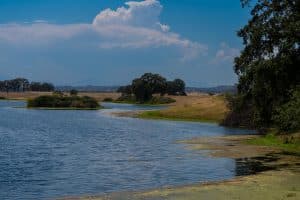How Private Water Wells are Drilled and their Benefits.

In the past, private water wells were primarily in rural areas, because these properties did not have access to city water. Recently, it has become more common for residential homes to have their own private wells and there are many benefits when having your own water well. Irrigation wells have become very prominent as well as farmers use it for farming and raising crops. It is very efficient.
- Independent Water Source: If there ever is a drought in your area you will not have to worry about losing your supply of water. This might be me being pedantic but technically, they would eventually lose water since walls are estimated to last 30-50 years. This is such a minor correction though and I’m not sure it’s worth it lol.)
- Higher Quality: Wells provide healthier and higher quality water than city water. This is important for people with certain medical conditions or sensitivity to chemicals.
- Increases Property Value: Adding a private water well will increase property value because it is seen as a bonus. This is an incentive to purchase a home by potential buyers.
- Cost-Effective: Well drilling can be a cost-effective way to access fresh water. After the initial installation expenses there will be no monthly water bill, saving you money over time. The only cost of a water well is an annual testing for contamination and impurities.
Finding Location to Drill
When installing your own water well you will work with a Hydrologist, who will assess the land to find an aquifer. Aquifer is the saturated area of soil, this is the source of your water supply. There’s also some equipment that can be used to test the health of the land, showing the electrical value of the earth. Once testing is done the hydrologist will create a pro-folio of the surface, marking rock layers and areas that are suitable for drilling holes.
Drilling Process
The process of drilling a water well can seem to be a daunting task, as long as you work with a reputable drilling company, such as WildHeron Drilling, there should be no reason to stress. Our crew at WildHeron Drilling in Northern California will help and walk you through the entire process.
Pre-Drilling
The first step to install a water well is to call WildHeron Drilling. Where they will get you scheduled for a site visit with a member of their sales team. During the site visit is where they will discuss recommended well specifications for depth and casing size, as well as gather all set back information to ensure the proposed well location will be approved during permitting.
Drilling
When a location has been picked and all permits have been collected, contractors will come to the location with all equipment needed.
Once the initial hole is drilled, or steel casing is installed which prevents the hole from collapsing and protects the well water from any contamination.
The next step is adding a filter pack—pea gravel or coarse sand are most common—to fill in the sides of the drill hole and the casing. This is also an important step from keeping contaminants from around the outside of the well casing. Last step is adding a sanitary seal to your well and receiving final permit sign off!
Post Drilling
Once the well is drilled, then a water pump will be installed to draw water from the well and to your home.After the water pump/system is ready to be installed, WildHeron Drilling will walk you through the entire process of the finishing touches your pump will need.
The End Result
WildHeron Drilling’s mission is to provide access to clean water through the drilling of wells that support customer needs in a timely and acceptable fashion. We care about customers and would love to hear from you regarding any questions you have on starting a drilling project in or around Northern California.

